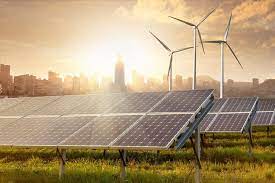
Let’s be honest — if you’re running a retail business, you’re constantly weighing up cost versus experience. You want your store to feel welcoming, vibrant, and fully stocked. But when the energy bill hits your inbox, it can feel like you’re paying a premium just to keep the doors open.
Quick answer? The most effective retail energy saving strategies include lighting upgrades, smart HVAC practices, appliance efficiency, automation, and building staff habits that help reduce retail store energy bills without compromising the customer experience.
Here’s how to strike that balance and future-proof your store.
What are the top retail energy saving strategies in 2025?
If you’re short on time, start with these five proven tactics:
- Switch all lighting to LEDs
- Set thermostats between 20–22°C (summer) and 18–20°C (winter)
- Automate lighting and signage timers
- Run equipment audits and replace energy-hungry machines
- Train staff to power down properly after hours
They sound simple, but collectively, they can reduce your store’s energy usage by up to 30%, according to Energy.gov.au.
How do lighting upgrades save money and still look good?
Retail is visual. The right lighting sells — but it shouldn’t cost you your profit margin.
Here’s the go-to lighting strategy:
- LED lighting: Uses 80% less power than halogens and lasts 10x longer.
- Zoning: Separate lighting areas (window displays, fitting rooms, storeroom) so you don’t need to light everything all the time.
- Motion sensors: Great for low-traffic areas like bathrooms or change rooms.
- Daylight sensors: Dim lights when enough natural light is present.
A surfwear store in Newcastle replaced 40 halogen downlights with LEDs and reduced their lighting energy costs by $110 a month. No change to the vibe — just a lower bill.
Can temperature control really affect energy savings?
Absolutely. Heating and cooling account for a major chunk of retail energy use, especially in larger stores or glass-heavy layouts.
Smart HVAC tips:
- Set ranges, not random temps
Stick to 20–22°C in summer and 18–20°C in winter. Anything beyond that is expensive comfort. - Keep doors closed (or use air curtains)
This small action can cut your cooling costs by 10–15%. - Clean air filters
Dirty filters make systems work harder — and cost more. - Service annually
An inefficient system can cost hundreds more per year to run.
One gift shop in Fitzroy found their ducted system was running 24/7 — even overnight. They added a timer and cut nearly $900 from their quarterly bill.
How do you make staff part of your energy-saving plan?
This is where Cialdini’s principle of Consistency shines. If your team adopts energy-saving as a habit, results follow.
Steps that work:
- Create an end-of-day checklist: Power off devices, turn off signage, close blinds.
- Use friendly signage: “Lights off when not in use” by switches and plugs.
- Reward consistency: A monthly energy champion or team shout-out.
- Keep it visual: Share quarterly energy reductions — make wins visible.
At one franchise beauty salon, staff competed to see who could save the most power over a month. They dropped their usage by 17% — just by being more aware.
Is automation worth the investment for small stores?
Yes — and not just for big box brands anymore.
Automation strategies include:
- Smart plugs: Automatically shut off unused devices at close.
- Thermostat scheduling: Heat or cool based on store hours.
- Lighting timers: Pre-set signage or interior lights to turn on/off.
- Usage monitors: Spot when your fridge, printer or air con is overworking.
One café-retail hybrid in Ballarat installed $200 worth of smart switches and saved $600 in six months. That’s a faster ROI than most marketing campaigns.
What role do appliances play in energy bills?
Outdated appliances are sneaky. They hum away quietly while racking up dollars on your electricity meter.
Key targets for replacement:
- Old fridges or display coolers
- Non-inverter air conditioners
- Desktop monitors or POS equipment left on standby
- Electric water heaters
Modern energy-rated models can cut consumption by 25–50%. If your gear is 10+ years old, an upgrade could pay itself off in under two years.
A florist in Toowoomba replaced their second-hand display fridge. It cost $1,800 upfront — but they saw $80/month savings straight away.
FAQ: Energy Efficiency for Retailers
Q: How do I find out what’s using the most energy in my store?
A: Use smart plugs or ask your provider for energy usage reports — or get a free audit from local business programs.
Q: Do extended trading hours always mean higher costs?
A: Not necessarily. Use automation and zone lighting to limit usage to where customers are.
Q: Can I get rebates for energy upgrades?
A: Possibly. Energy.gov.au lists state-based rebates for lighting, appliances, and solar.
Final thought
Energy costs aren’t set in stone. Every retailer has the power to make smarter choices — and those small tweaks, over time, turn into big savings.
From lighting to air con, from your fridges to your floor staff — the most effective retail energy saving strategies don’t disrupt your flow. They quietly work in the background, saving dollars while you focus on what matters: creating a great in-store experience.
For more ways to reduce retail store energy bills, it’s worth tapping into tools that offer real-time visibility and better control — because energy is one line item you can shrink with confidence.
